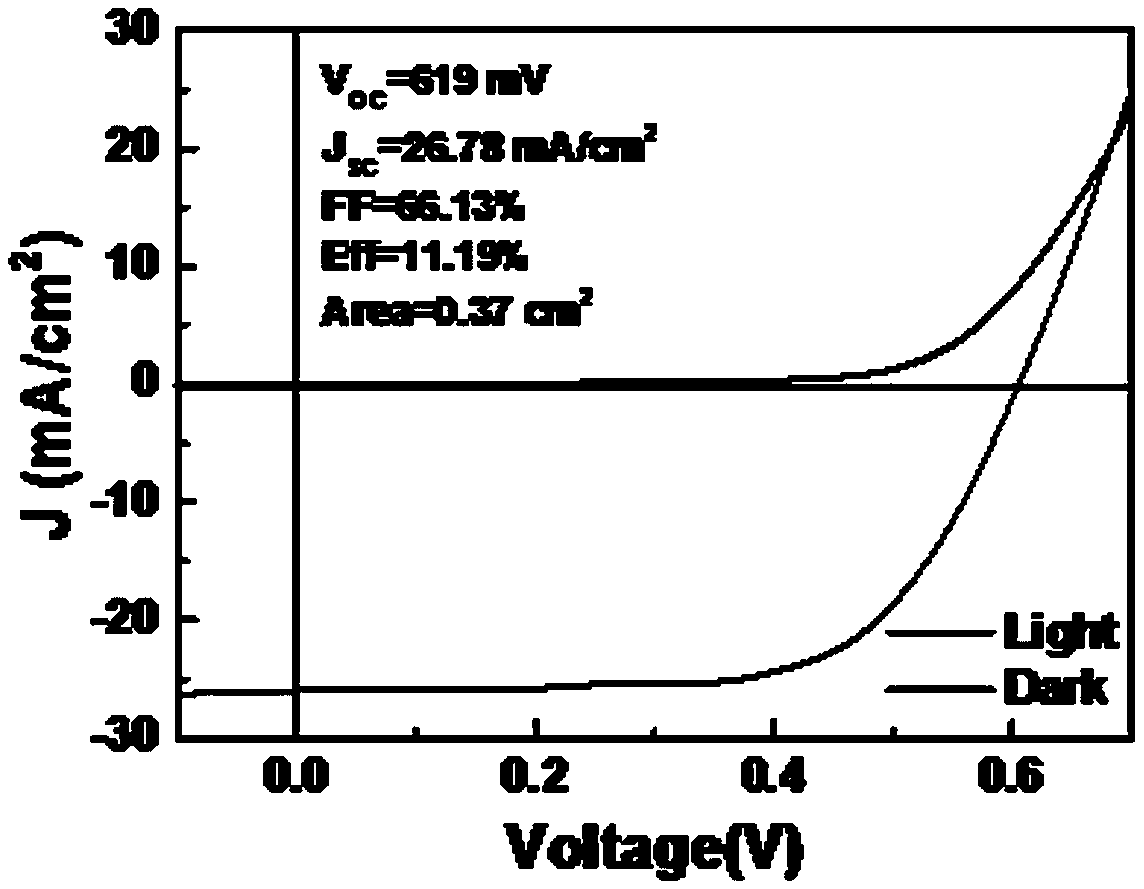Method for improving efficiency of flexible copper indium gallium sulfide selenide thin film solar cell
A copper indium gallium sulfide selenide, solar cell technology, applied in circuits, photovoltaic power generation, electrical components and other directions, can solve the problems of harsh preparation conditions, high cost, low photoelectric conversion efficiency, etc., to promote grain growth, low equipment requirements , the effect of reducing the time and temperature of selenization
- Summary
- Abstract
- Description
- Claims
- Application Information
AI Technical Summary
Problems solved by technology
Method used
Image
Examples
Embodiment 1
[0030] Step A. Sputter molybdenum electrode on a clean polyimide / stainless steel substrate: When the pressure of argon reaches 2Pa, turn on the DC sputtering power supply, adjust the power to 200W, pre-sputter for 5min, and then remove the metal stopper Plate, sputter on the substrate for 30 minutes, then adjust the argon pressure in the cavity to 1 Pa, sputter for 30 minutes, turn off the power supply, and obtain a molybdenum electrode with good density and adhesion.
[0031] Step B. Preparation of CIGSSe precursor solution: First, weigh copper powder (0.0699g, 1.10mmol), indium powder (0.0960g, 0.83mmol), gallium powder (0.0250g, 0.35mmol), selenium powder (0.1812g, 2.29 mmol), bismuth chloride powder (0.0104g, 0.0456mmol) and potassium chloride powder (0.0034g, 0.0456mmol) were added to a 25mL Erlenmeyer flask; then 5mL ethylenediamine and 5mL ethanedithiol were added. Finally, the round-bottomed flask was sealed and placed on a heating platform, and magnetically stirred at 60...
Embodiment 2
[0041] Step A. Sputter molybdenum electrode on a clean polyimide / stainless steel substrate: when the pressure of argon reaches 3Pa, turn on the DC sputtering power supply, adjust the power to 250W, pre-sputter for 5min, and then remove the metal stopper The plate was sputtered on the substrate for 60 minutes, then the argon gas pressure in the cavity was adjusted to 0.1 Pa, sputtered for 60 minutes, and the power was turned off to obtain a molybdenum electrode with good density and adhesion.
[0042] Step B. Preparation of CIGSSe precursor solution: first, weigh copper nitrate (0.206g, 1.10mmol), indium nitrate (0.250g, 0.83mmol), gallium nitrate (0.0895g, 0.35mmol), selenium dioxide (0.2541g, 2.29mmol), bismuth nitrate powder (0.193g, 0.4mmol) and potassium hydroxide powder (0.0228g, 0.4mmol) were added to a 25mL Erlenmeyer flask; then 5mL ethylenediamine and 5mL ethanedithiol were added. Finally, the round-bottomed flask was sealed and placed on a heating platform, and magnetic...
Embodiment 3
[0050] The steps in this embodiment are roughly similar to those in embodiment 1, and the similarities will not be repeated. The difference is that bismuth chloride powder is not added in step B.
PUM
| Property | Measurement | Unit |
|---|---|---|
| Thickness | aaaaa | aaaaa |
| Effective area | aaaaa | aaaaa |
| Fill factor | aaaaa | aaaaa |
Abstract
Description
Claims
Application Information
 Login to View More
Login to View More - R&D
- Intellectual Property
- Life Sciences
- Materials
- Tech Scout
- Unparalleled Data Quality
- Higher Quality Content
- 60% Fewer Hallucinations
Browse by: Latest US Patents, China's latest patents, Technical Efficacy Thesaurus, Application Domain, Technology Topic, Popular Technical Reports.
© 2025 PatSnap. All rights reserved.Legal|Privacy policy|Modern Slavery Act Transparency Statement|Sitemap|About US| Contact US: help@patsnap.com



